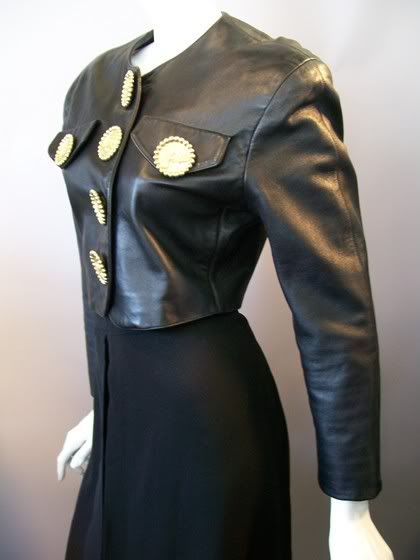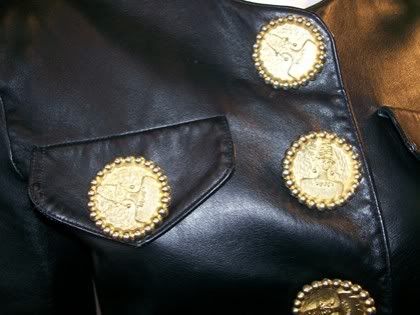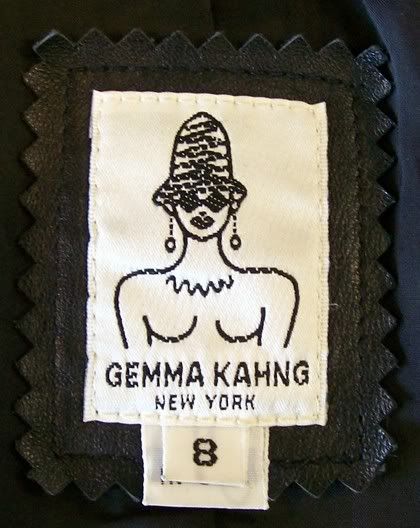She has a website:
http://www.gemmakahng.com/
Here is a pic of her and a short article:
http://www.urbanmozaik.com/2001.july_htmls/july01_fea_gemma.html
"She's a lot like her designs," wrote Barbara Phillips of the Wall Street Journal in August 1991 of Gemma Kahng, "a winning mix of playfulness and practicality, forthrightness, and charm." Kahng's fashion design is practical, but at the same time, the chief trait of her work is to render a classic idea slightly askew or fresh with a theme of whimsy, exaggeration, or notice. The charm of the work is its perturbed normality: it is all just right but for that one eccentricity or detail that seems gloriously juvenile or marvelously anomalous in the template of a traditional garment.
Kahng's clothing is undeniably serious, addressed paramountly to an American working woman of some means, but always with a note of self-expression. Buttons can be almost as whimsical as those of Schiaparelli; pockets are unexpectedly given colorful flaps in accent colors; and pockets bounce with asymmetry. Schiaparelli is Kahng's soulmate in fashion history, not for the flamboyant garment but rather for those most restrained tailored suits that Schiaparelli created with nuanced absurdities and minor amazements. Kahng's identifying style resides in such quirky twists on classics, attention inevitably being drawn to the garment by an outstanding detail, but restrained in every other aspect of the composition.
Kahng works closely with her former husband, Charles Chang-Lima, who helms his own well-respected design line. For many years, Kahng worked out of Manhattan's Seventh Avenue garment district in New York, keeping production within the neighborhood rather than seeking large-scale production elsewhere. It is a matter for Kahng of quality and control; by keeping production local, she is attempting to guarantee production standards by watching the process, an old tradition of the garment industry now abandoned by many bigger companies. It is a working philosophy she has continued, even after her office moved to SoHo. Of course, there may be a reason for a designer not born in the U.S. to appraise American traditions and Western dress with a reasoning, potentially ironic eye. Kahng recalls that in her Korean childhood there were no store-bought dolls and that she had to fantasize and create clothing for her paper dolls.
"Classic with a twist" is a conventional goal of many young designers who take a minimal risk in construction and allow one lovely or bizarre note to make a memorable difference. The concept, however, is difficult to carry out, as one disturbance from the norm can seem to be an unwelcome aberration, especially in clothing that depends upon our sense of recognition of formality. Kahng has demonstrated an unusually sure and decisive sense of distorting or contributing enough in the gesture of discrepancy but without destroying the practical validity of the garment. When a tweed jacket is trimmed with red, the effect is at first of the most diabolically arresting house-painting on the block, but the combination settles into a rather winsome palette of clothing for the hunt. A pea jacket modified by horses on the pockets and jeweled buttons on the front ensures it will not be worn by Popeye, but deliberately softens the military regimen into a feminine and whimsical jacket. The anomaly for Kahng is never mere kitsch or cuteness: it is a feature that alters our perception (whether color or content) of the entire garment, an abnormality making us see the normal in a wholly new way.
Kahng departed somewhat from her established style in the late 1990s as she began to refocus both her design and her business strategy. While retaining her signature decorative accents, Kahng's designs and fabrics became softer and more delicate. Aside from moving her office to SoHo, she scaled down her staff and reduced the number of pieces in her new collections. Kahng also placed her couture line as well as her more affordably priced clothing in several high-end department stores under various labels. The designer ventured into the children's market in 1999 and also helped design the costumes and sets for fellow Korean American Margaret Cho's acclaimed one-woman performance piece.
From her emergence in the late 1980s, Kahng has stayed true to her proven and effective design statement; never unduly impulsive, the design is nonetheless different and enchantingly whimsical: Kahng honors the great traditions in dress and yet gives a happy surprise with each garment.
—Richard Martin;



